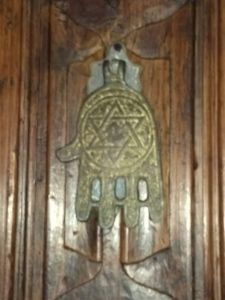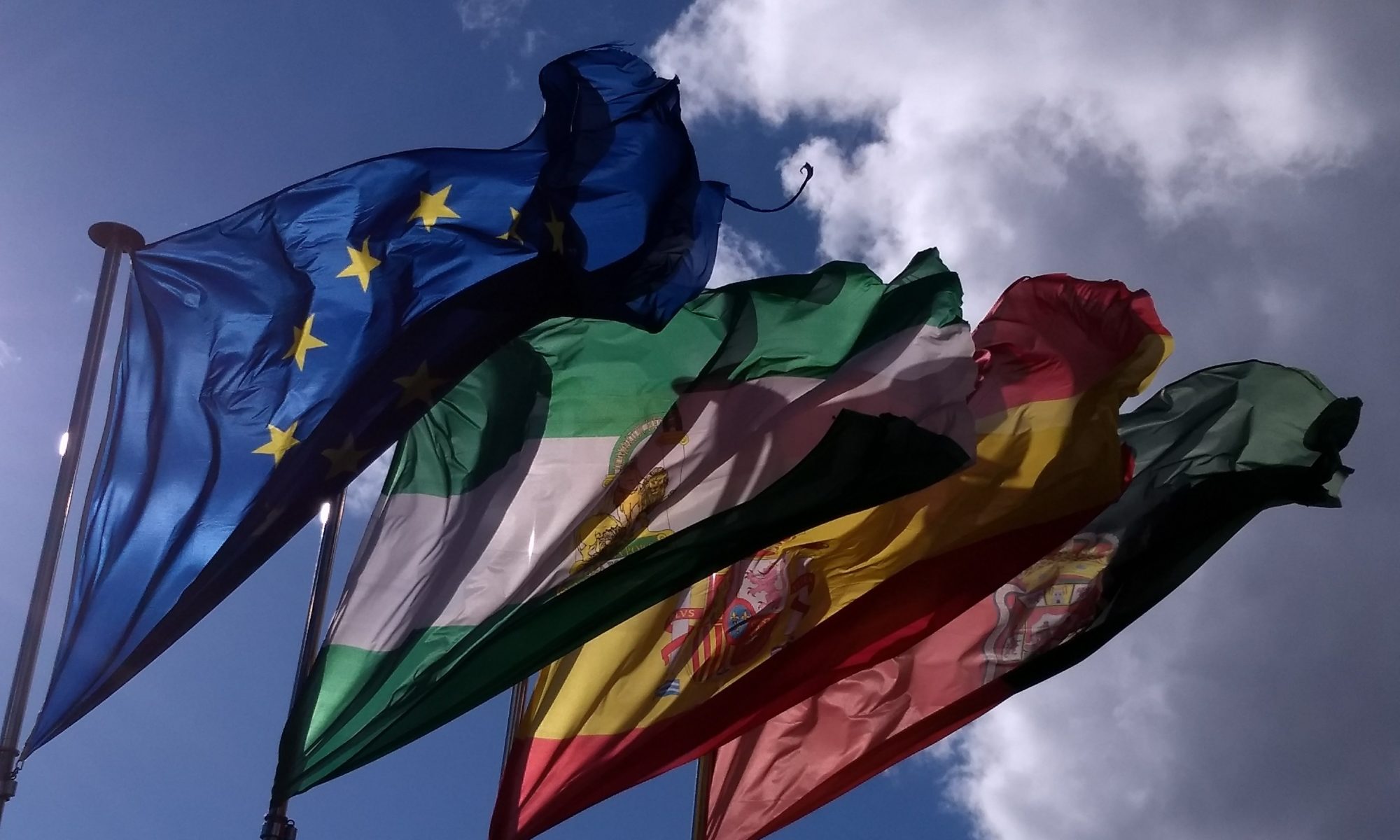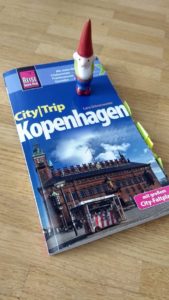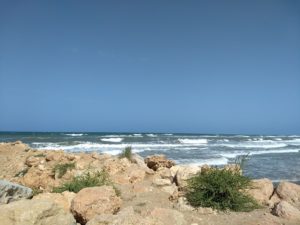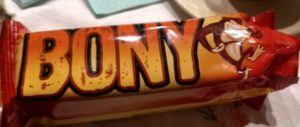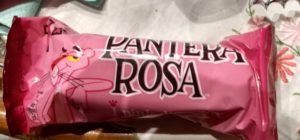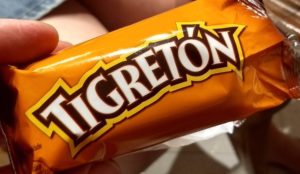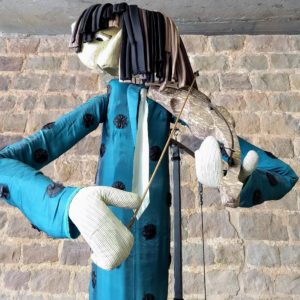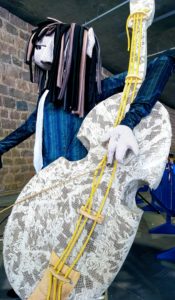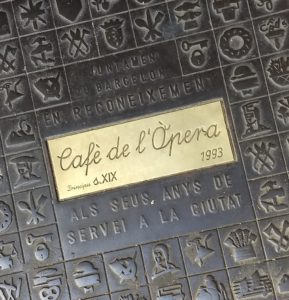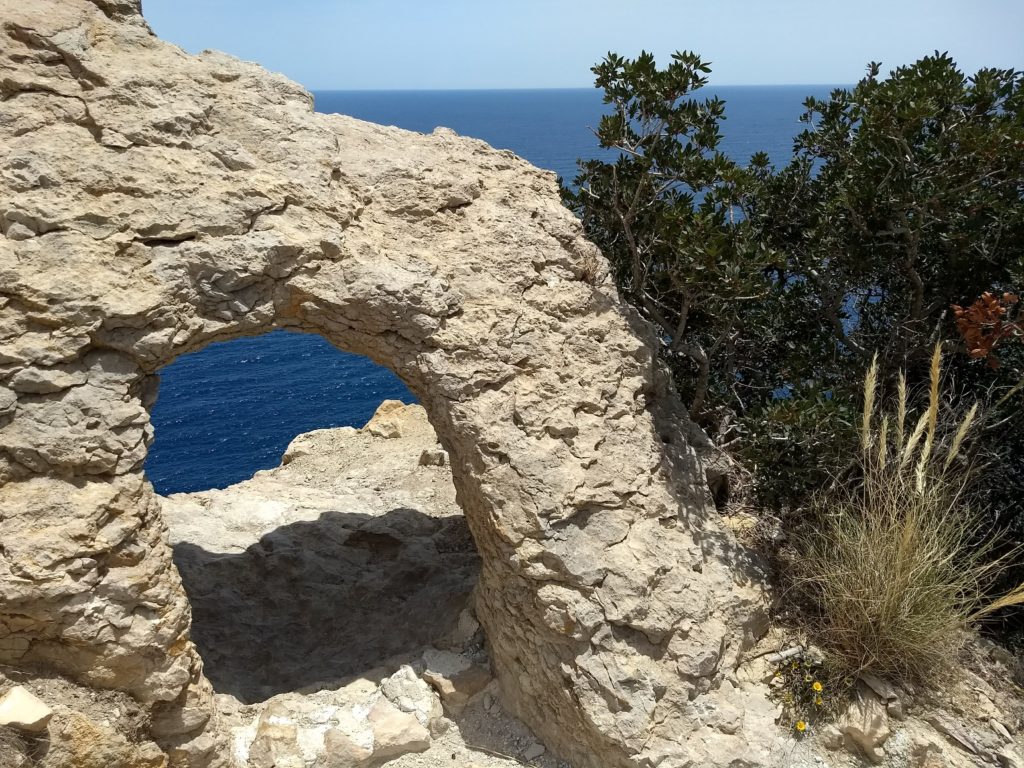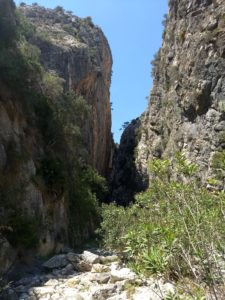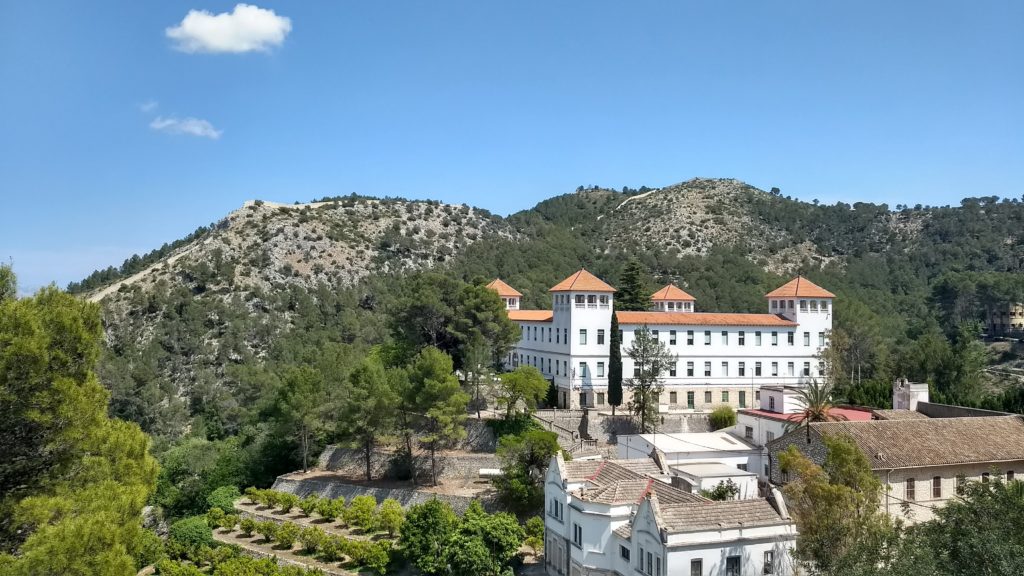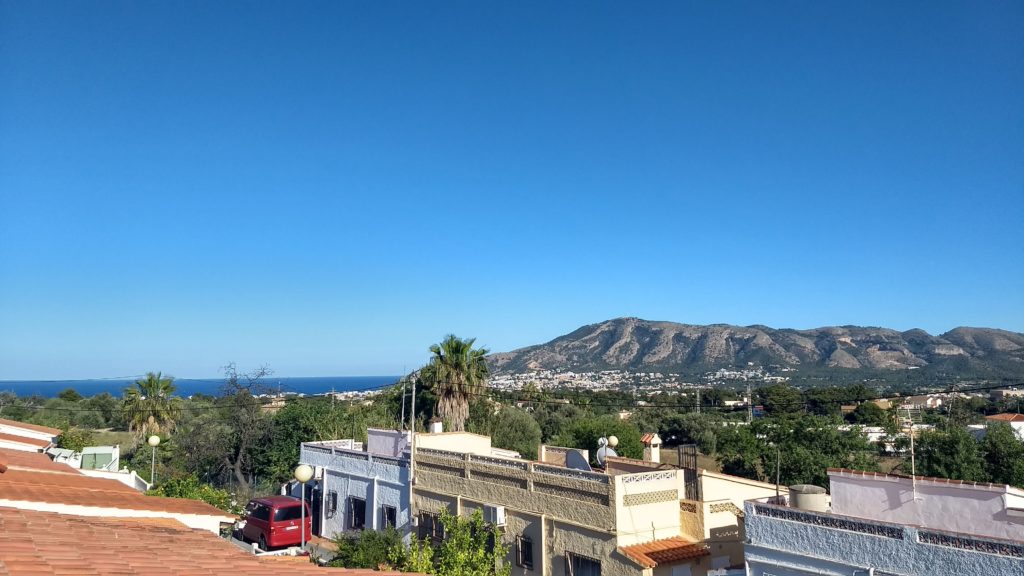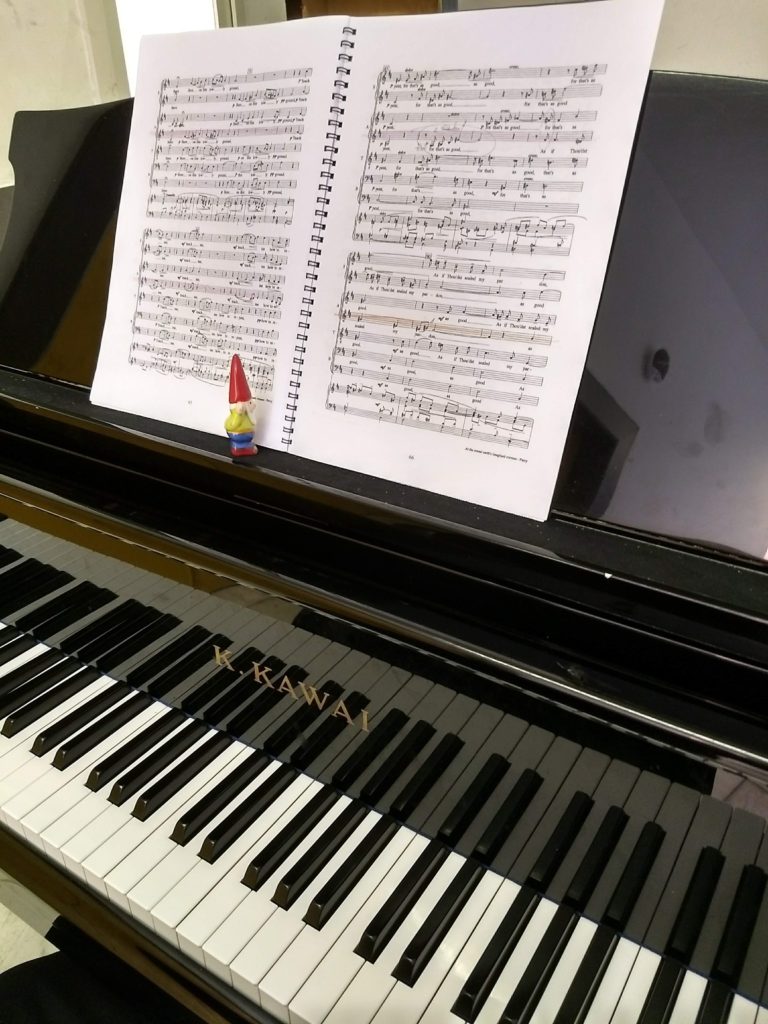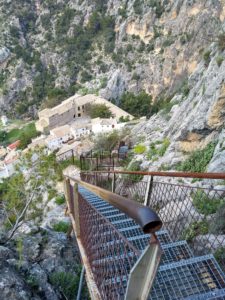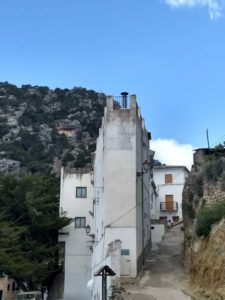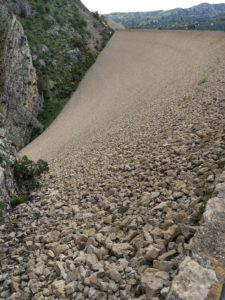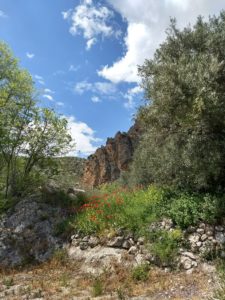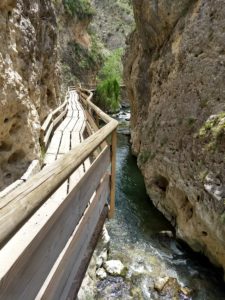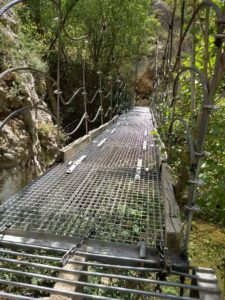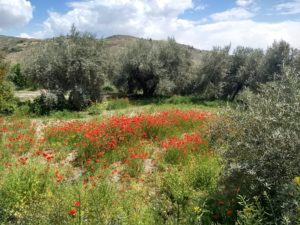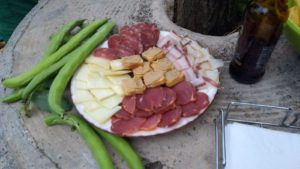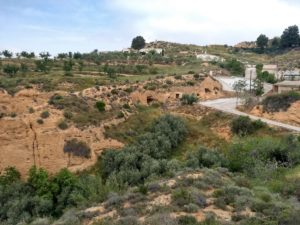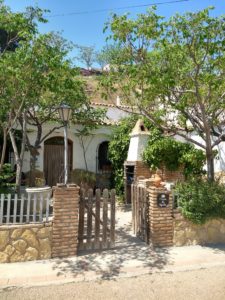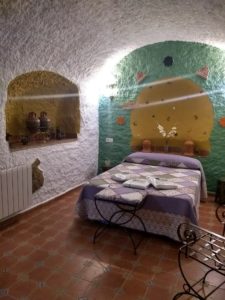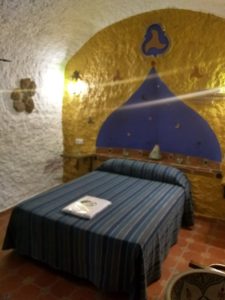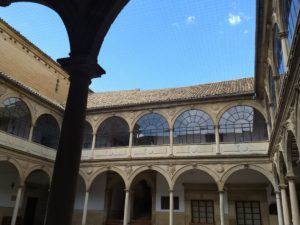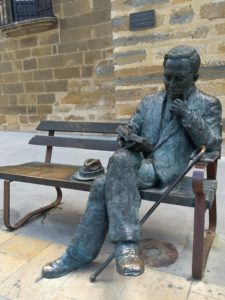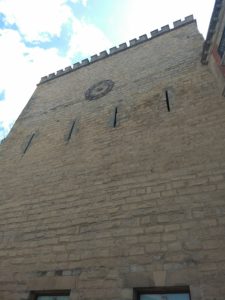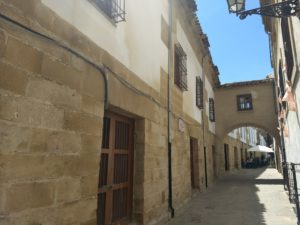Dummy start
Al-Andalus – 711-1614
«Al-Andalus, das ist die Zeit der islamischen Herrschaft auf der Iberischen Halbinsel. Diese Kulturepoche, die Zivilisation des Maurischen Hispanien, bildet ein zentrales Kapitel in der europäischen Geistesgeschichte. Die maurische Präsenz auf hispanischem Boden dauerte fast ein Jahrtausend, vom Jahre 711, als die Soldaten des Târiq ibn Ziyâd ihren Fuss auf den Felsen des Târiq (Djabal Târiq = Gibraltar) setzten, bis zum Jahre 1614, als die letzten Moriscos in Erfüllung des fünf Jahre zuvor ergangenen Ausweisungsedikts des spanischen Königs Philipp III die fruchtbaren Täler der Provinz Murcia in Richtung Marokko verlassen mussten. Trotz ihrer langen Dauer und immensen historischen Bedeutung ist diese Epoche dem Bewusstsein des allgemein gebildeten Europäers nur marginal gegenwärtig. Gewiss kennt jeder die Alhambra, jenes Wunderwerk des maurischen Rokoko, das mit seinen Gärten und Brunnen zum Inbegriff eines romantisch verklärten spanischen Mittelalters geworden ist. Aber wer diesen Bau errichtet hat, wessen Gedichte seine Mauern schmücken und was diese bedeuten, das ist, ausser einem kleinen Kreis hochspezialisierter Gelehrter, kaum jemandem geläufig. (…) Zweifellos ist dieses Kulturgut orientalisch in Herkunft und Substanz, aber es ist auch ein integraler Bestandteil Europas, auf seinem Boden erblüht und Teil seines Reichtums… »
aus: Das Wunder von al-Andalus,
die schönsten Gedichte aus dem Maurischen Spanien, C.H.Beck
«Al-Andalus, that is the era of the Islamic rule on the Iberian Peninsula. This cultural period, the civilisation of the moorish Hispania, is a central part of the European spiritual history. The Moorish presence on hispanic soil lasted almost a thousand years, from 711, as Târiq ibn Ziyâd’s soldiers landed on the Rock of Târiq (Djabal Târiq = Gibraltar) to 1614, as the last Moriscos were forced out of the fertile valleys in Murcia and left for Morroco following the edict of expulsion decreed by the Spanish King Felipe III five years before. Despite its long duration and inmense historical importance, the period has hardly a presence in the mind of the European with a common level of education. Of course they know the Alhambra, that marvel of moorish rococo, that has turned into the image of an imagined, romanticised spanish Middle Ages. But who constructed these buildings, whose poems decorate its walls and what they mean is unknown to all except for a small circle of specialised scholars. (…) The origin and the substance of this cultural heritage is doubtles oriental, but it is also an integral part of Europe, flourishing in its soil and part of its wealth…“
from: Das Wunder von al-Andalus,
die schönsten Gedichte aus dem Maurischen Spanien, C.H.Beck
Und mit einem dieser zauberhaften, sinnlichen Gedichte aus der Blütezeit der europäischen Kultur danke ich dir, Svend, von ganzem Herzen für jeden Augenblick, den du mir in Andalusien geschenkt hast.
Sehnsucht nach Nähe
Ach, gibt es keinen Weg mit ihm allein zu sein,
fernab, von allen Tugendwächtern unbehelligt?
Wie seltsam, dass ich mich nach seiner Nähe sehne,
wo er doch zwischen Brust und Rippen in mir wohnt!
Prinzessin Wallâda bint Al-Mustakfî
(Córdoba, 994-1091 )
And with this enchanting, sensual poem from the heyday of European culture, I want to thank you, Svend, from the bottom of my heart for every moment that you gave me in Andalusia.
Longing for closeness
Oh, is there not a way to be alone with him,
Far away from all the guardians of Virtue?
How strange that I long for his closeness
living as he does between my chest and my ribs!
Princess Wallâda bint Al-Mustakfî
(Córdoba, 994-1091 )
Barcelona – Bern
Wie Andorra auf dem Hinweg, bot sich Barcelona auf dem Rückweg als idealer Ort für den Zwischenstopp an. Wir verlassen die schöne Katalanin gegen Mittag nach einem ausgiebigen Frühstück. Allzu schnell ist die Grenze zu Frankreich erreicht. Bäume, Dörfer, Felsen, Burgen fliegen vorbei. Und wieder geraten wir auf der Höhe von Orange in eine Gewitterzone, wie letztes Jahr auf der Heimreise aus Spaniens Norden.
Like Andorra on the outgoing trip, Barcelona was the ideal place for the last break of the trip. We leave the beautiful Catalan around midday after a large breakfast with our hosts. We reach the French border all too quickly. Forests, Towns, Mountains, Castles speed by. And again, just like last year on the way back from Northern Spain, a big thunderstorm is waiting for us around Orange.
Im Herzen tief berührt und unendlich bereichert von Andalusiens einmaliger Schönheit, kehren wir nach rund 10 Std. Fahrt heim. Müde, gesund, dankbar. Was uns hier erwartet, haben wir nicht erwartet…
Very touched and feeling very rich in memories after experiencing Andalusias singular beauty, we arrive home after ten hours driving. Tired, healthy and thankful. We didn’t expect what we found upon opening the front door…
Danke, liebste Laura, dass du unsere Ankunft vorbereitet, erleichtert und uns zum Lachen gebracht hast!
Thank you, dearest Laura, that you prepared our arrival, got all the stuff ready for us and gave us a big laugh!
Alfaz del Pi – Deltebre- Barcelona
Etwa 2 Stunden südlich von Barcelona erreichen wir bei strahlendem Wetter das Ebrodelta. Mit einer Fläche von etwa 320 km² ist das Ebrodelta nach dem Nationalpark Coto de Doñana das zweitgrösste Feuchtgebiet Spaniens und das zweitgrösste im Mittelmeergebiet, nach dem Nildelta. Auf etwa 3/4 der Fläche wird Reis angebaut.
South of Barcelona, about two hours drive before we reach the city, we find the Ebro River Delta. With a surface of 320 km² it is Spain’s second largest wetland after the Coto de Doñana National Park and the second largest in the Mediterranean after the Nile Delta. About 3/4 is used for rice growing.

Wir machen einen Strandspaziergang von ungefähr 2 Stunden. Ziemlich entspannend. Fast kontemplativ. Bevor wir Richtung Barcelona aufbrechen, gibt’s eine herrliche Muschelpfanne. Frischer geht’s nicht. Sehr lecker!
We take a stroll at the beach for about two hours. Very relaxing, almost a meditation. Before we leave for Barcelona we enjoy a delicious mussel meal, as fresh as it can get. Delicious!
Beim Zwischenstopp in Barcelona beherbergen uns Svends Studienkollegin Heike und ihr Sohn Aron in ihrer Wohnung. Das ehemalige WG-Zimmer aus Svends Studentenzeiten (1990-1994) wird derzeit von einer jungen Geigerin aus Denver bewohnt, Isabel. Wir verbringen Stunden mit reden in Sp, E, und D, essen, trinken, lachen. Sergio kommt am Samstagabend mit Tochter Blanca zum essen. Die drei Gleichaltrigen schwelgen in Erinnerungen, Anekdoten und Schokolade aus Kinderzeiten. Herrlich unkompliziert. «Mi casa es tu casa».
Our last stay in Spain for this trip is in the flat belonging to Heike and her son Aaron. Heike is a student colleague of Svend and they shared the flat in 1990-1994, the room that he used is now occupied by Isabel, a violinist from Denver. We spend the hours chatting in Spanish, Englisch and German, eating, drinking and laughing. Sergio, another friend from the university years, comes around Saturday evening for dinner with his daughter Blanca. The three spend the time remembering the «good old days» and share delicious sweet junkfood cakes… Wonderfully easy-going, «mi casa es tu casa».

Barcelona besuchen, zwei Nächte dort bleiben, und nur etwa 4 Stunden in der Stadt sein – erscheint sinnlos, geht aber. Ein Bisschen erneuerter „Mercat St. Antoni“, ein Bisschen Plaça Catalunya und Ramblas, ein Bisschen «Katze» von Botero und andere schräge Typen, ein Bisschen Café de l’Òpera. Mehr Zeit war nicht. «Adéu, Barcelona, ens veurem aviat»…
Trip to Barcelona, staying two nights and the only spend four hours to visit the city – sounds silly, but it is great. A bit of the renewed „Mercat de Sant Antoni“, a bit of Plaça Catalunya and the Ramblas, a bit of Botero’s «Cat» and other strange characters, a bit of Café de l’Òpera. Time’s run out. «Adéu, Barcelona, ens veurem aviat»..
Costa Blanca – Wandern 3
Wandern? Eher ein Spaziergang. Aber es passt schön schön zu den vorherigen Titeln.
Der asphaltierte Fussweg hinauf zum Leuchtturm von Albir ist Standard, wann immer wir in Alfaz sind. Das Richtige, wenn ein sonniger (Halb-)Tag ruft und wir grad nichts Konkretes vorhaben. Hauptsache draussen, das Badezeug dabei. Warum es so schön ist, zum Faro herauf zu wandern (ja, man kann auch joggen, theoretisch)? Nun…
Hiking? A stroll, rather. But then it wouldn’t fit in with the other titles.
The tarmaced road up to the Albir lighthouse is a must-do whenever we are in Alfaz. Just the right thing when you have to fill a sunny (half-)day and you have no concrete plans. The main thing is being outside, the swimming suits at hand. Why is it so nice to hike up to the Faro (you could theoretically also jog all the way). Well….
Costa Blanca – Wandern 2 – Wissenschaft
Auch heute geht’s in die Berge. Nach einem gesunden Frühstück in Altea, fahren wir nach Campell, wo wir die Staumauer „Presa de Isbert“ leider nicht mehr besuchen, jedoch in der sehr trockenen Natur rund um Campell wandern können.
Today we are also off into the mountains. After a healthy breakfast in Altea we drive inland to Campell, where we hike to the failed dam „Presa de Isbert“, alas, we couldnt geht up on the dam itself but we did enjoy the dry landscape and the deep gorges.
In der Ferne erblickt Svend einen Gebäudekomplex, den ich beim ersten Hinschauen für ein Spital (zu abgelegen), ein Gefängnis (keine Gitter) oder irgend ein Heim halte. Es handelt sich um das „Sanatorio San Francisco de Borja“ (Fontilles), das letzte Sanatorium für Leprapatient*innen in Europa. Von Franziskanerinnen betreut und Ärzt*innen medizinisch versorgt, wurde diese Leprastation 2016 definitiv geschlossen. Die letzten 26 Betroffenen, welche teils über Jahrzehnte im weitgehend autarken Dorf lebten, sind geblieben. Geblieben ist auch die rund 3km lange Mauer, die Fontilles noch immer von der Aussenwelt trennt, obwohl die Barriere beim verlassenen Wachthäuschen mittlerweilen offen steht.
In the distance Svend spots a cluster of buildings that i first take for a hospital (too isolated) or a prison (no bars) or some kind of residence. It is the „Sanatorio San Franciso de Borja“ in Fontilles, the last Sanatorium for lepra patients in Europe. Cared for by franciscan nuns and treated by doctors, the Lepra Station ceased normal operations in 2016 but kept open its residence for the last 26 patients, that had lived almost all their lifes in this isolated community. What was also left was the three kilometer long, 3 meter high wall that cut off the center from the outside world. Today the access is open to all.
Es ist still im Ort, ein Mann rattert auf einem Traktor vorbei. Eines der Gebäude beinhaltet eine aufschlussreiche Ausstellung mit Bildern alter Behandlungsinstrumente und unerschrockener Pioniere, Beschreibungen zahlreicher (Un-)Wahrheiten sowie die Entwicklung seit dem letzten Jahrhundert. Heute dient Fontilles als Forschungsstation für Lepra (Morbus Hansen) und andere vergessene Krankheiten. Das viertürmige Hauptgebäude wird als Rehaklinik genutzt.
It is a quiet place, a man driving a tractor rattles past. In one of the buildings a small but detailed exhibition tells Fontilles story, with pictures of old treatment instruments and the fearless pioneers, the myths and facts about lepra and how it was treated the last 100 years. Today Fontilles is a research centre for lepra (Morbus Hansen) and other „forgotten“ illnesses. The white building with the four cornertowers is now a rehabilitation clinic.
Costa Blanca – Wandern 1
Wie gesagt, Strand und baden an der Costa Blanca sind Ehrensache. Wandern auch. In weniger als 1 Std. erreichen wir von Alfaz aus Gebiete, die durch eine herrliche Natur, Fernblick und immer wieder Überraschendes einladen. Eine davon führt uns in die Berge oberhalb von „Bolulla“ zu den „els arcs“, den natürlichen Steinarkaden, die durch Erosion entstanden. Atemberaubend schön. Majestätisch.
As said, swimming and sunbathing on the Costa Blanca is a tradition. So is hiking. Less than an hour drive from Alfaz takes us to areas with beautiful landscapes, wide views and constant suprises. One of them, over the little village of Bolulla takes us to Els Arcs, natural stone arches that have been eroded out over millions of years, Breathtaking and majestic beauty.
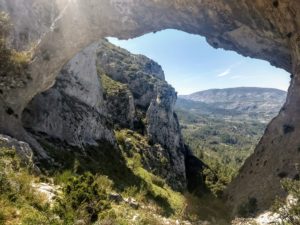


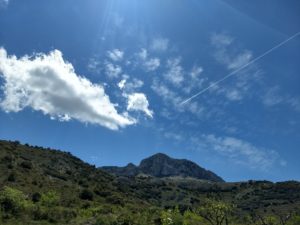
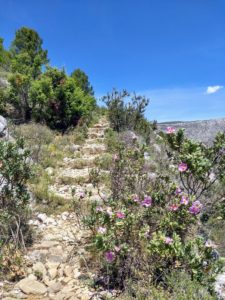
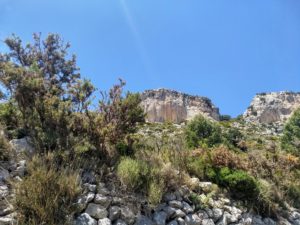

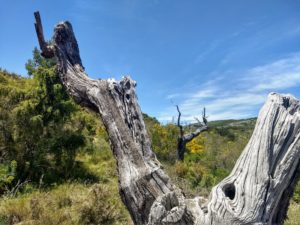
Der Weg führt uns vorbei an knorrigen Baumstämmen, Blumen, Mandelbäumen. Es ist trocken und heiss und einfach wunderschön. Rund 4.5 Std. sind wir unterwegs. Vorher gibt’s deshalb ein reichhaltiges Frühstück auf dem Kirchplatz in Alfaz, nachher ein Bier oder zwei. Was will der Mensch mehr…
The trail takes us past knotty treetrunks, flowers, almondtrees. It is dry and hot and simply wonderful. We hike for four and a half hours, living off the generous breakfast we had enjoyed on the Church Square in Alfaz, afterwords we get our strength back with a beer or two. What more can you wish for…
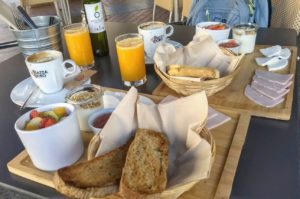

Alfaz del Pi (Alicante)
Meine Antwort auf die Frage „was kann man denn in Spanien ausser am Meer liegen sonst noch machen?“ ist kurz: alles. Ja, auch Skifahren. Nicht, dass wir wegen Letzterem jedes Jahr mehrmals die iberische Halbinsel besuchen, nein, ganz einfach, weil es so vielseitig, weit und von ebenso karger wie üppiger Schönheit ist. Und natürlich, weil wir in Alfaz del Pi (Alicante) Familie, Freunde und Bekannte haben. Freunde, die uns währen 14 Tagen ihr Haus zur Verfügung stellen, von dessen Terrasse aus wir auf die Sierra Helada, Albir und das Meer blicken können…
My answer to the question „What can you do in Spain apart from lying on the beach“ is short: anything. Yes, you can even go skiing. Not that this is what brings us to the Iberian Peninsula several times a year, but simply because it is so varied and full of possibilities, so wide and open and with an incredible diversity of barren and lush landscapes. And of course while we have family, friends and acquaintances there. Friends that let us use their holiday home for a fortnight, where we enjoy a splendid view of the Sierrra Helada, Albir and the Mediterranean…
… oder Bekannte, in deren Restaurant wir immer wieder gern eine herrliche Paella kosten
…or acquaintances that run a restaurant where we always come to enjoy a delicious Paella
… oder freundliche Bekannte, die mir einfach den Flügel des örtlichen Kulturzentrums zum Üben fürs Belcanto-Konzert von Ende Juni zur Verfügung stellen. Kostenlos. Wann ich will. Solange ich will. Unser Reisezwerg Hans ist begeistert…
…or friendly acquantances, that just let me use the grand piano at the local Cultural Centre to practice for the Belcanto-Concert at the end of June. For free. Whenever I want and for as long as i want. Our travelling gnome Hans is also thrilled…
Hinojares/Cazorla
Auf dem Weg nach Hinojares/Cazorla erklimmen wir die 220 Stufen zum Castillo de Tíscar, einer Burg aus dem 14. Jht. Die Weitsicht ist unglaublich, der Blick auf das an deren Fuss liegende Dorf zeigt Häuser, die ich nicht möblieren möchte…
On the way to Hinojares/Cazorla we climb the 220 steps to the Tíscar Castle, a fortress that dates back to the 14th century. The view is incredible, looking down we see some houses in the village at the feet of the castle that cling to the sides of the mountain and that I wouldn’t like to have to select te furniture for…
Der Parque Natural de Cazorla ist mit 210’000 ha der zweitgrösste Naturpark Europas. Wir machen eine Wanderung in die Umgebung des Stausees von Castril.
The Cazorla National Park is with 210,000 hectares Europe’s second largest, we go for a hike near the Castril dam.
Unsere Höhle – im wahrsten Sinn des Wortes – befindet sich am Rande des Naturparks in Hinojares, einer „Gemeinde“ Jaéns mit nur 310 Einwohner*innen. Drei davon lernen wir kennen, die Besitzer der Höhlenhotels und deren kleine Tochter (7), die mir ganz unerwartet am letzten Abend, während wir alle bei einem Apero vor unserem steinernen Heim plaudern, eine Fussmassage beschert. Zauberhaft, mit ihren kleinen Händen, und überdies sehr angenehm.
Our cave -literally- is just outside the national Park in Hinojares, the smallest independent county in Jaen with just 310 inhabitants. We get acquanted with three of them, the owners of the cave-hotel and their youngest daughter (7), that surprises me with a foot-massage during our farewell-party in front of our stony lodging. Her small fingers work magic and are very pleasant.
In einer Höhle übernachten? Wir machen das 4 Nächte lang, während früher Leute permanent dort wohnten. Einige bestehen noch, verfügen aber inzwischen über Wasser- und Stromanschluss. In Hinojares liegen einige Wohnhöhlen eingebettet in einen Barranco, eine trockene Schlucht.
Sleep in a cave? We do that four nights while people used to live permanently there and still do, in caves with all modern ammenities like water, electricity and communications. In Hinojares there are still some cave-neighborhoods that have residents, mainly around a Barranco, a dry gorge.
Die einzelnen Höhlen des Hotels sind gut ausgebaut, liebevoll hergerichtet, verfügen über Jacuzzi und privaten Vorplatz. Ein idealer Ort für Leute, die Aussicht, Natur, Entspannung und Ruhe geniessen wollen. Der neue Hammam ist im Bau, das kleine Freiluftschwimmbad längst in Betrieb. Und heizen tun die mit „Kernenergie“ – also, mit Olivenkernen.
Wir stranden in Hinojares zum Schluss unserer wunderbaren Andalusien-Rundreise. Irgendwann werden wir nach Málaga fliegen, ein Auto mieten und gut 2 Stunden später wieder Loli und José begrüssen, deren Eltern als Gastarbeiter in der Schweiz tätig waren.
The caves like the one we stay in are very nicely decorated, have their own little frontgarden and Jacuzzi. An ideal place for people looking for peace and tranquility in the middle of nature to relax and rest. A new Hammam is being built, the pool would be opnend next week. And the heating and warm water is generated by „stone-age“ technology.. olive stones are used as fuel in a furnace to generate heat.
Hinojares is the last Andalusian part of our trip. Someday we will fly to Malaga, get a car and drive the two hours to see Loli and José again, whose parents were immigrant workers in Switzerland.
Am 10. Mai nehmen wir Abschied von Andalusien und fahren Richtung Alfaz. Der anfänglich nur bewölkte Himmel verdunkelt sich zunehmend. Ich ignoriere die ersten Tropfen und erachte die Scheibenwischer als unnötig. Auf der Höhe von Almansa (Kastilien-La Mancha) kapituliere ich, die Wischer müssen arbeiten. Etwa 200m vor mir sehe ich einen dunklen Vorhang tief auf die Autobahn hängen. Die Strasse glänzt schwarz. Der Wind drückt uns in die Flanken. Svend ruhig: „Da vorne wird es wohl etwas heftig“. Wir denken beide an die Szene in „Bienvenue chez les Ch’tis“, in welcher der Hauptprotagonist beim Strassenschild von Nord-Pas-de-Calais in die Regenwand fährt. Ich tauche auch in die Regenwand ein, wir lachen, die Scheibenwischer fegen bei Tempo 60 km/h auf Stufe 3 übers Glas.
On May 10th we say goodbye to Andalusia and drive on towards Alfaz. The blue sky starts getting grey and dark, I ignore the first drops and deliberately do not switch on the wipers. Around Almansa (Castille-La Mancha) I capitulate and the wipers clear the sight of the motorway. Some 200 meters in front of us there is a dark curtain hanging over the motorway. The tarmac shines dark. The wind presses against the sides of the car. Svend says calmly „That looks a bit wild out in the front“. We both think of the scene in „Bienvenue chez les Ch’tis“, where the main character drives into a wall of rain as he reaches the sign I also dive into the rainwall, we laugh, while the wipers on high try to cope with the watermasses showering our car as we slow down to 60 kph.

Baeza und Úbeda
Baeza und Úbeda, die beiden Städte in der Provinz Jaén, sind sehr Renaissance-geprägt und deren Altstadtteile seit 2003 UNESCO-Weltkulturerbe. Baeza wurde 1226 als erste Stadt Andalusiens durch Ferdinand III von den Mauren zurückerobert.
Baeza and Úbeda, both in the province of Jaen, are very much Renaissance towns and their centresnhave been UNESCO World Heritage since 2003. Baeza was the first Andalusian town to be reconquered from the Moors in 1226 by Ferninand III.
In Baeza können wir die alte Universität mit dem kunstvollen Innenhof nicht betreten, weil gerade eine Trauung stattfindet. Macht nüt, wir fotografieren stattdessen den alten Seat 1500, mit dem der Bräutigam später seine frisch Angetraute „ent-fährt“ und ergötzen uns am ebenfalls oldtimerähnlichen Brautjungfern-Quartett.
Our first attempt to see the old Univeristy building with a elegantly decorated courtyard was blocked by a wedding, but we got the chance to get some pictures of the magnificent Seat 1500 oldtimer the groom was to drive off with his bride as well as of the bridesmaids that also looked a bit old-timey.
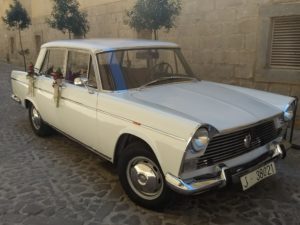

An der Universität hat der Dichter Antonio Machado unterrichtet. Sein Denkmal erinnert uns an den Leitspruch unserer Reise
This university also had the poet Antonio Machado as a teacher, a monument to him reminds us of the motto of our journey.
Natürlich besuchen wir auch hier die Kathedrale, die uns stark an jene Jaéns erinnert. Sie ist eine Mischung aus Gotik und Renaissance und wurde Mitte des 16. Jhts. von Vandelvira entworfen resp. wiedererrichtet. Der tonnenschwere Leuchter in der Gebäudemitte wurde erst in den 1980-er-Jahren aus Jaén gebracht.
A must see in Baeza was the Cathedral, that strongly reminded us of the one in Jaen. A mixture of Gothic and Renaissance, designed and (re)built in the middleof the 16th century by Vandelvira. The central chandelier, weighing several tonnes, was brought to Baeza from Jaen in the 1980s.
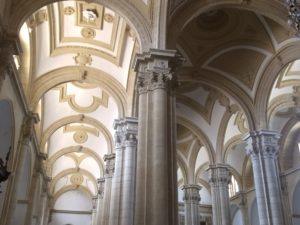
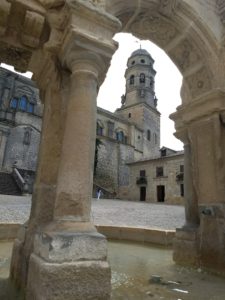
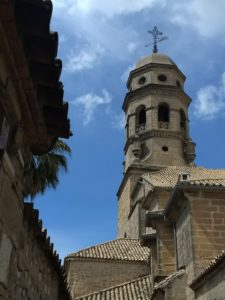
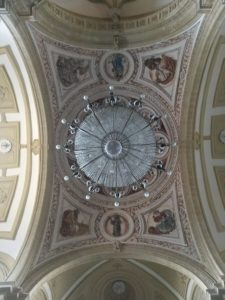
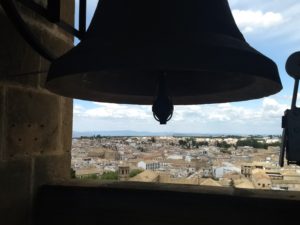
Baeza ist wie Úbeda sehr gut erhalten und bietet Sehenswertes: einen Schlachthof aus dem 14. Jht. (heute Verwaltungsgebäude) oder einen badenden Hund – „er liebt den Schaum in Gesicht“. Nein, zwischen den beiden Bildern besteht kein direkter Zusammenhang.
Baeza is like Úbeda very well preserved and offers a lot to see, a old Slaughterhouse from the 14th century (now a public building) or a bathing dog -„he loves foam in his face“-. And no, there is no direct relation between the two pictures.

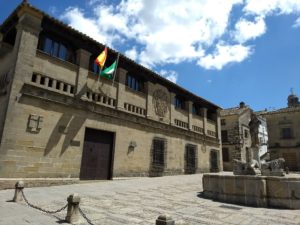
Wir biegen ihn ein Seitengässli mitTapas-Bars und Restaurants ein, in denen fast ausschliesslich Spanier*innen sitzen. Gutes Zeichen. Beim letzten Sonnenschirm unterhalten sich zwei Personen, der ältere Herr grüsst mich, sobald ich auf seiner Höhe bin. Wo ich/wir herkomme/n, fragt er,. Zwei, drei Worte, und der Mann will uns etwas zeigen. 5 Schritte, er öffnet ein grosses Tor zu einem langen Haus und bittet uns einzutreten. Fernandito – „so nennen mich hier alle“ – ist 83. Er war Bauingenieur, sein Grossvater und Vater waren wohlhabende Olivenölhändler. Das Haus mit dem Wehrturm diente als Lager. Fernandito und seine beiden Brüder haben das gesamte Gebäude geerbt und jüngst umbauen lassen. 3 Familien leben nun dort, die Ehefrau unseres „Gastgebers“ dürfen wir ebenfalls begrüssen. Der Turm mit Stadtor (torre de los Aliatares (muslimisches Stammesvolk?)), ist der letzte erhaltene Teil der Ringmauer aus dem 12. Jht. „Das zeige ich nur Leuten, die mir sympathisch sind“. Wir fühlen uns schon ein Bisschen geschmeichelt.
We turn into a narrow street with tapas-bars and restaurants where all the patrons look spanish, a good sign. Under the last parasol a elderly gentleman is talking with a woman, and he greets me as I reach him. He asks where we come from, and after exchanging some words he tells us he wants to show us something. A few paces away he opens a big heavy door and lets us into a big cavernlike room with beautifully hewn stonewalls. He introduces himself as Fernandito -„that’s what everybody calls me here“- he is 83 and has been a civil engineer, his father and grandfather were well-to-do olive oil merchants. He has inherited the stately house together with his two brothers and they have turned it into nice appartments with all modern comforts and with the medieval walls still visible. We get to enter the Torre de los Aliatares, the last remaining tower in the muslim city wall and a very impressive constrution that „normal“ tourists only get to see from the outside. „I only show this to people I think are nice“, Fernandito tells us. Yes, we do feel honoured.
Zum Abschied erklärt uns Fernandito mit Nachdruck, wo wir nicht essen sollen, weil trotz grosser Portionen zu teuer, und wo wir jedoch unbedingt essen müssen, weil lecker und anständige Preise…
As we leave, Fernandito insists on tell us where not to go for lunch, as their portions are too big and not very good, but rather some other places where the food is delicious and the prices fair.
In Úbeda überrascht uns die Hl. Erlöserkappelle, im dem 16. Jht. von den Architekten de Silhoé und Vandelvira geplant. Sie ist die Privatkappelle von Francisco de los Cobos, dem Staatssekretär Karls I resp. V. Wenn Funktionäre Macht demonstrieren…
In Úbeda we are surprised by the sumptuous Chapel of the Saviour from the 16th century, designed by the architects Silhoé and Vandelvira. It was the private funeral of Fancisco de los Cobos, Secretary to Charles I / V and he did show how mighty anad wealthy his family was with this building.
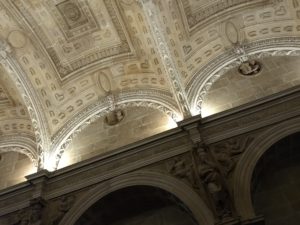
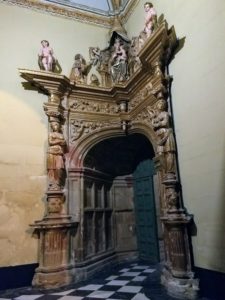
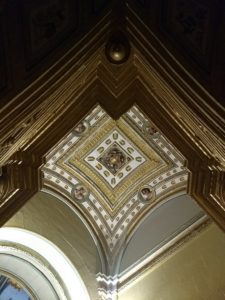
Die Kappelle ist einer von zahlreichen Reinaissance-Bauten und birgt interessante Geheimnisse: Das hölzerne Altarbild verbrannte während des spanischen Bürgerkriegs (1936-39) fast komplett – die Christusstatue blieb verschont und ist heute Teil des neuen Hochaltars.
The Chapel is one of many Renaissance buildings in the town and has a lot of interesting and secretive details The wooden altarpiece was almost completely burnt down during the Spnish Civil War (1936-39), only the central figure of Christ survived and is now part of the reconstructed altar.
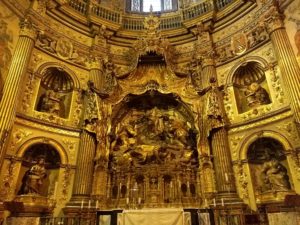
Den hölzernen Haupteingang ziert ein Sandsteinbogen, in den die klassischen Götter eingemeisselt sind – absolut ungewöhnlich für die Renaissance und begründet mit der „liberalen Phase“ Karls I / V. Kurz danach regierte wieder der strenge Katholizismus.
The wooden entrace door is decorated by a sandstone arch that shows classical greek gods – remarkable for a church even in the Renaissance and a show of the „liberal Phase“ during Carlos I/V’s reign, which didn’t last long before returning to strict Catholic orthodoxy.

Dem Bürgerkrieg fiel auch die Orgel zum Opfer. Sie wurde neu gebaut und in die restaurierte Kirche eingefügt, war aber leider zu hoch. Deshalb musste ein Teil des Balustraden-Geländers weichen. Dafür singt jetzt auch der Kirchenchor wieder…
The organ was also a vitim of the Civil War, a new one was added after in the restored church, but it was too high for the railings and a section had to be removed. But now at least a chuch-choir sings regularly.

Am Abend geht ein Gewitter über der Stadt nieder. Wasser spielt auch eine zentrale Rolle bei der „Sinagoga del Agua“, die wir besuchen und trocken bleiben. 2007 wurden beim Umbau mehrerer Wohnhäuser die Ruinen einer bis dahin unbekannten Synagoge entdeckt. Der Mikwe, das Bad für die rituelle Reinigung, liegt direkt unter der Synagoge und ist vollständig erhalten, mit 7 direkt in den Fels gehauenen Stufen und mit sog. lebendigem Wasser.
A storm rolls over the town in the evening, rain starts falling. Water was also very important in the Sinagoga del Augua, the Water Synagoge, that we visit to stay dry. It was a completely unexpected discovery made in 2007 as block of houses in the old town was being rebuilt. The Mikveh or ritual bath has been completely conserved with the seven steps hewn directly into the rock and filled with living water.
